Why you can trust TechRadar
We spend hours testing every product or service we review, so you can be sure you’re buying the best. Find out more about how we test.
In a world where many of the best antivirus tools are just brands run by the same few companies, Malwarebytes is refreshingly different. Despite being informally established way back in 2004, it’s still independent, still run by its founder, Marcin Kleczynski, and still providing effective malware-hunting software for millions of users worldwide.
Malwarebytes Premium Security is a capable antivirus range with phishing protection, identity protection, and (at the top of the range) even a full and unlimited Mullvad-powered VPN (no restrictive ‘200MB a day’ limits here, you can use it as much as you like.) There are apps for Windows, Mac, Android and iOS and you can try them right now with limited free editions.

Malwarebytes Premium Security: Pricing
Malwarebytes Premium Security is available in various flavors, depending where you are in the world.
Premium Security Standard is the full antivirus with browsing protection. It’s priced from $44.99 a year for a one device license, dropping to $78.73 if you sign up for two years. A five device license costs $79.99 for one year, $139.98 for two; a 20-device license costs $229.99 for one year, $402.48 for two (that’s $10.6 per device per year.)
Premium Security Plus adds an unlimited VPN, but is only a little more expensive at $59.99 for a one device, one year license; and $99.99 to protect five devices for one year, or $184.98 for two.
Premium Security Ultimate includes full identity protection with data removal, 3 bureau credit monitoring and $2 million in identity theft insurance. As with similar products, it’s priced significantly higher. Even a single user, one-year license costs $119.99 in year one, and it doubles on renewal to $239.99.
If you’ll use the VPN, then these look like reasonable prices. Norton 360 Standard has antivirus, a full VPN and one or two extra features (password manager, 2GB cloud backup), but although it looks cheap at $39.99 for a one year, three device license, it jumps to $94.99 on renewal. Premium Security Standard can protect five devices for a similar price.
If you’re unsure, Malwarebytes also has a limited free version. This doesn’t include real-time protection; it detects and removes existing threats, but can’t protect you from new attacks. But it’s still an easy way to sample the app and get a free for how Malwarebytes Premium might work for you.

Malwarebytes Premium Security: App design
Malwarebytes Premium Security has a simple and straightforward design. While many security suites expect you to decipher cryptic icons and browse through panel after panel after panel to find what you need, Premium Security displays all its essentials up-front. Even total security newbies will figure out the basics at a glance.
There’s a Scan button to, well, launch an antivirus scan, for instance. The VPN panel has your selected location and a Connect button. Real-Time Protection status is displayed in a reassuring green, and although there are some complex settings, you won’t see them unless you go looking.
Having captions for almost every option means the dashboard has a text-heavy look, and it’s not as visually stylish as some of the competition. But it’s also less intimidating and much easier to use, and that’s what matters most.
We still found a few tasks that were a little awkward. When Malwarebytes incorrectly identified a safe file as malicious, for instance, we went into Quarantine, chose the file and hit Restore. But because there was no ‘Restore and never detect this file in future’ option, Malwarebytes restored the file, then immediately detected it as a threat and quarantined it again. We had to manually add the file’s folder to Malwarebytes’ ‘Allow List’ before we could restore it properly.
There were technical issues, too. Antivirus needs to protect itself from malware, but we found it was theoretically possible for an attacker to remove Malwarebytes’ filter drivers. We’re not marking Premium Security down for this because it didn’t seem to affect detection, but it’s an unnecessary potential vulnerability that we don’t see with the best antivirus.

Malwarebytes Premium Security: Antivirus scanning
Malwarebytes didn’t launch a full antivirus scan on launch, so we clicked the Scan button to manually run one of our own. First-time antivirus scans can sometimes take hours as an app crawls every corner of your device, but Malwarebytes Premium Security takes a lighter approach and scans the most commonly infected areas only. This worked well, with the scan completely in only 13 minutes, but still finding all our test malicious files.
A Scan Scheduler enables automatically running future scans without getting in your way. Set a start date, a frequency (hourly, daily, weekly, monthly, once or on reboot), and when a scan is due and your device is idle, Malwarebytes pops up to run its checks. We would like a few more controls (many antivirus have an option to postpone scans when your device is on battery), but, overall it’s a flexible scheduler which makes it easy to scans for threats.
Malwarebytes Premium Security works well with Explorer. You can check files, folders or drives directly from the right-click menu, and have a verdict in a few seconds. Well, normally: the app doesn’t handle simultaneous scans, so if there’s already a system scan running in the background (or you just haven’t closed the report window from a previous scan), you can check anything else until it’s finished. But this isn’t unusual, and Malwarebytes does at least display a big notification as a warning.
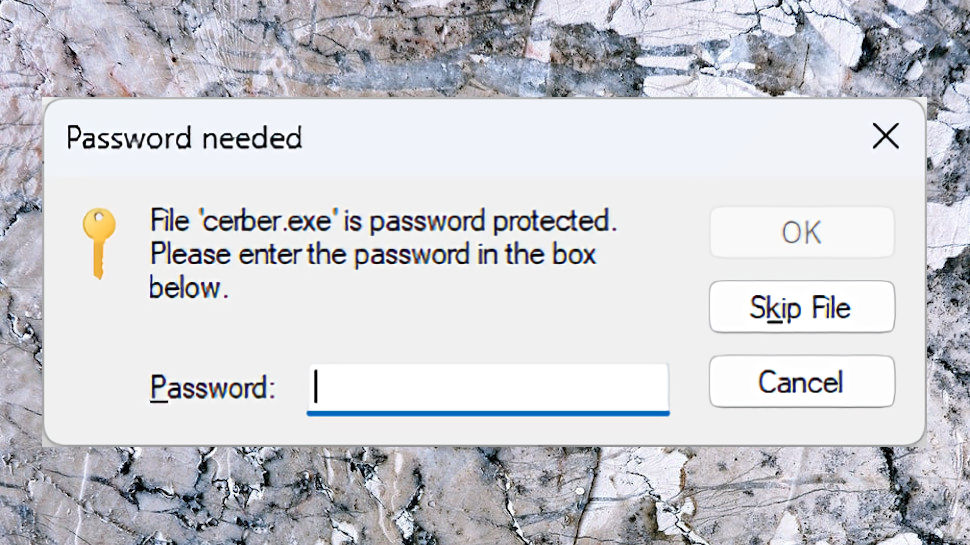
We spotted one potential scanning issue. If Malwarebytes tries and fails to scan a password-protected zip, it doesn’t display any warning: it just tells you it’s scanned the file and everything’s fine. If you’ve accidentally included malware in that zip, you’ll assume it’s safe, and if you send it to a colleague then they might do the same. That’s a recipe for trouble.
Bitdefender handles this much better. If a Bitdefender app detects a password-protected archive, it asks you for the password so it can check the file properly. And if you don’t know the password or the file otherwise can’t be scanned, it displays a warning, so it’s clear that you’ve not been given a completely clean bill of health. That’s a much safer approach, and we’d like to see Malwarebytes do the same.
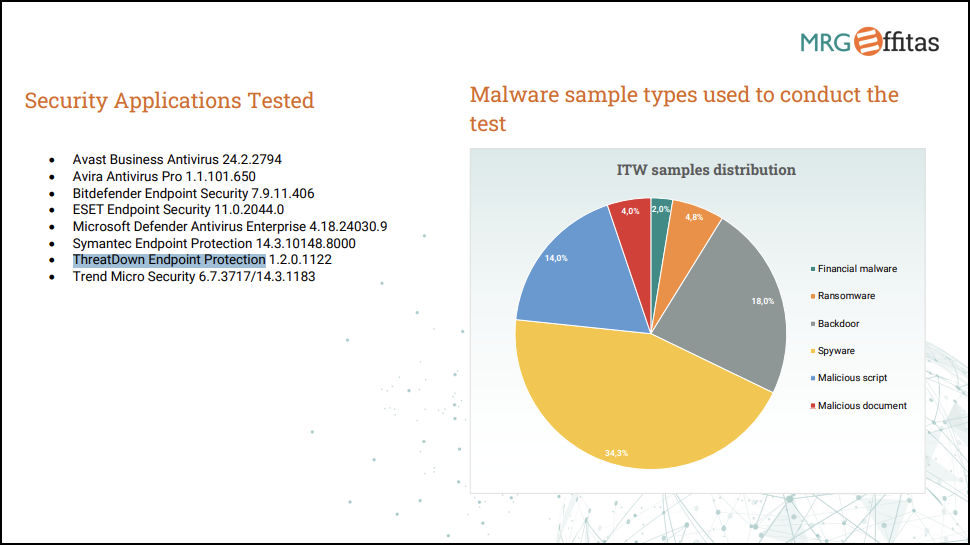
Malwarebytes Premium Security: Independent lab results
Malwarebytes isn’t tested by most of the independent antivirus labs, making it more difficult to compare with the big name competition, but the company does appear in a handful of reports.
The Malwarebytes website proudly points to its AVLab ‘Product of the Year’ award, but this isn’t quite as impressive as it sounds. ‘Top Product’ award doesn’t mean ‘better than all other products’; any provider gets it if they appear in three tests in a year and block at least 99% of threats each time. Nine vendors were awarded’ Product of the Year’ in 2024 alone.
Malwarebytes does better at MRG Effitas, where Malwarebytes Mobile Security and its business product, ThreatDown, blocked all threats in their respective Android 360 Programme and 360 Assessment tests. That’s good to know, but it’s not enough data to calculate a position for Malwarebytes in our overall Malware Protection chart.
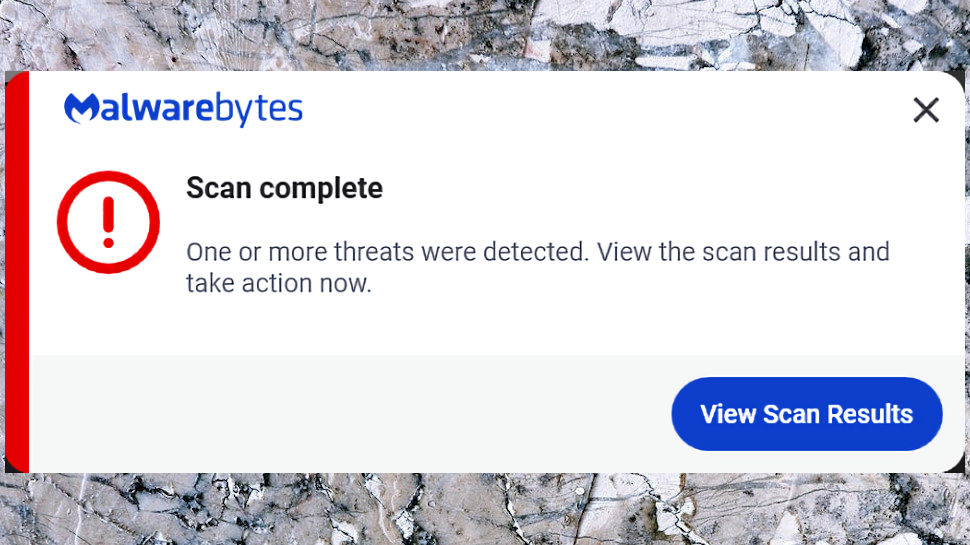
Malwarebytes Premium Security: Malware protection
Lab results are important, but we also run plenty of our own tests. These began by connecting a USB key with 50x known malware samples. Premium Security didn’t immediately scan the drive, but when we tried to open a file, it detected it as a threat, then scanned the rest of the drive and detected the others.
We would like an option to scan removable drives when they’re connected, but Malwarebytes’ scan-on-access approach is faster, and the app did a good job of protecting us from known threats.
Next, we launched a custom ransomware simulator on our review laptop. An antivirus can’t detect this from the file signature alone because we’ve never released it into the wild, making the simulator a great test of behavior monitoring.
The results were disappointing: Malwarebytes Premium Security watched but did nothing as our simulator encrypted thousands of user documents. We don’t read too much into that – Malwarebytes detected every real-world ransomware sample at MRG Effitas, so it’s clearly working well on the tests that matter – but most antivirus apps detect and block our ransomware immediately, and we’d be a little happier if Malwarebytes did the same.
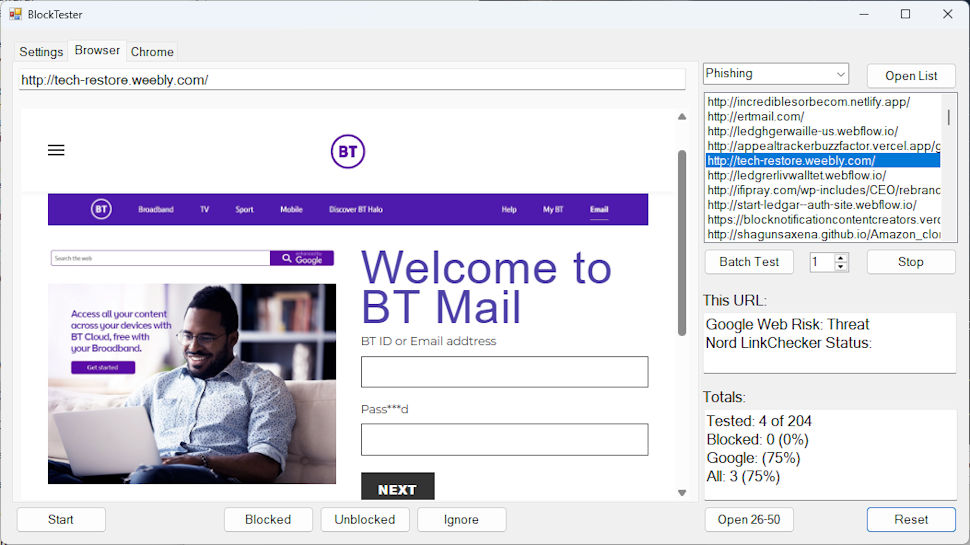
Malwarebytes Premium Security: Anti-phishing
Malwarebytes Premium Security includes what the website calls ‘Robust scam protection’, where the app ‘shuts down robocalls, scam texts, phishing attempts, and dangerous decoy websites.’
To get a feel for Malwarebytes’ effectiveness, we first compiled and tried to access 50 of the very latest phishing sites. The results were disappointing, with Malwarebytes blocking a poor 16% (the best web protection tools stop 70-90% of threats.)
Fortunately, Malwarebytes has a second layer of protection in its BrowserGuard browser extension. We installed this on Chrome, ran the test again and it made a big difference, with the two layers now blocking 62% of our test malicious links.
That’s good news, although we still prefer anti-phishing tools to block threats at the system level. BrowserGuard protects all the top browsers – Chrome, Edge, Firefox, Safari, there’s even a Telegram beta – but it can’t shield smaller browsers or any of your other apps.
Next, we tried to access 50 malware-hosting links. Malwarebytes performed much, much better here, with Premium Security alone (no need for BrowserGuard) blocking 94% at the URL level. The remaining files reached our hard drive without detection, but were spotted and blocked on launch.
Overall, Malwarebytes does a reasonable job of protecting users from online threats. We would like to see less reliance on the BrowserGuard extension, though, and other antivirus providers typically do a much better job of blocking phishing sites.
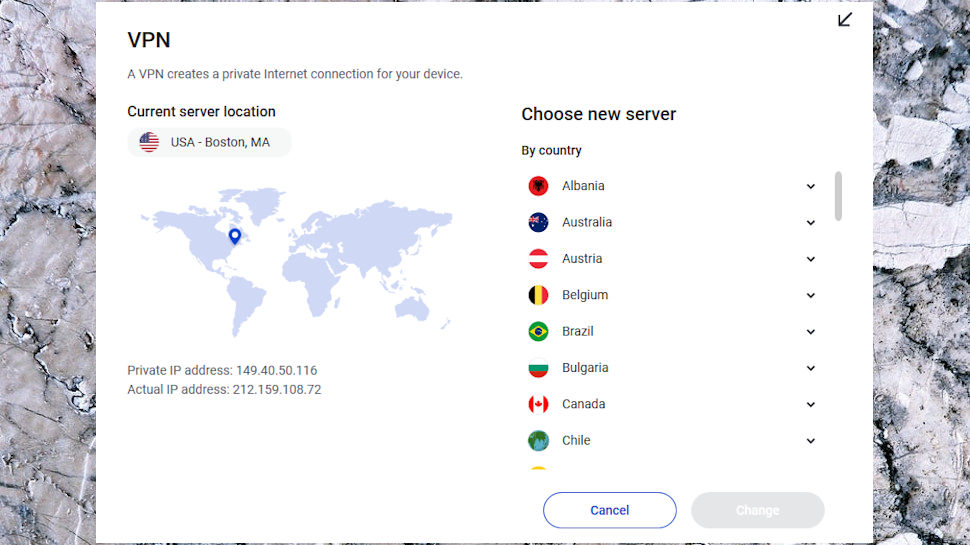
Malwarebytes Premium Security: Unlimited VPN
Malwarebytes Premium Security Plus (the middle of Premium Security’s three plans has a very valuable extra in an unlimited VPN. This encrypts your traffic when you connect to public Wi-Fi, ensuring snoopers and malicious hotspots can’t spy on what you’re doing or direct you to fake websites. It allows you to change your IP address to make it seem like you’re in another country, maybe allowing you to access streaming content or other websites that are normally blocked.
Malwarebytes’ VPN is essentially Mullvad underneath, with the same network and locations. It’s not quite as good as buying Mullvad direct, because Malwarebytes’ apps don’t have quite as many VPN features and the company can’t offer the same level of specialist VPN support. But it’s good news overall because Mullvad is fast, powerful, and has a great reputation for privacy.
The VPN has a decent-sized network of 87 locations spread across 49 countries. It’s strong in Europe and North America, with 19 locations in the US alone. There’s less coverage elsewhere, but Malwarebytes still manages 10 locations in Asia, 4 in South America, 2 in Africa, and it covers all the key countries we expect.
Malwarebytes VPN is easy to use. A panel displays the VPN status (on or off) and the currently selected location. Tap Change and you can choose a new country, or tapping Connect activates the VPN in a few seconds.
There are lots of features underneath, especially for an antivirus app VPN (they’re usually basic.) Auto-connect tells the VPN to automatically activate when the app starts or you connect to public Wi-Fi; a kill switch blocks your internet if the VPN drops; split tunneling allows you to choose apps which won’t use the VPN; enabling Multi-Hop VPN gives you extra security at the expense of a little speed, and the list goes on.
Malwarebytes misses out some useful settings (you can’t choose a VPN protocol, for instance presumably because it’s trying not to overload consumers with too many technical options. We checked , but overall it looks more capable than the average security suite VPN. But how does it perform in real-world testing? We wanted to find out.
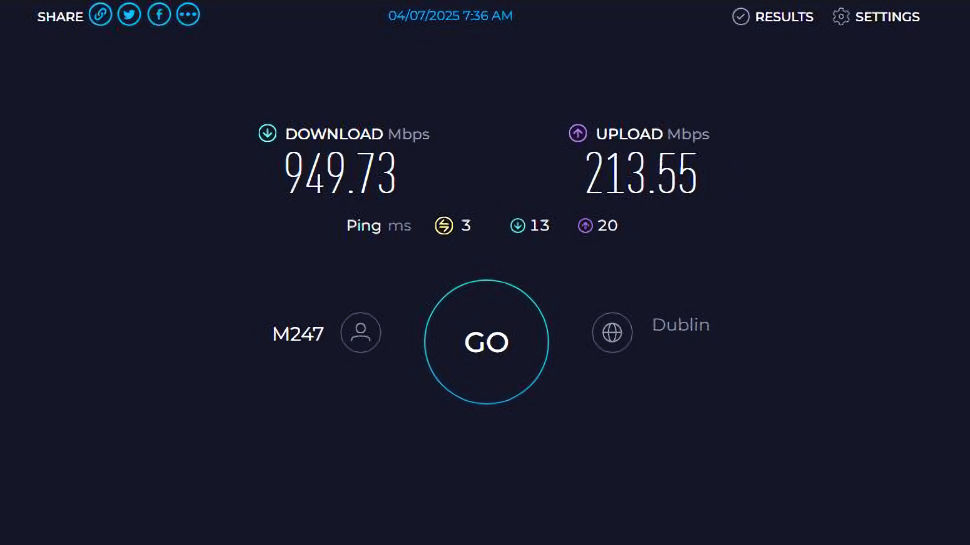
Malwarebytes Premium Security: VPN Performance
We tested Malwarebytes VPN by running multiple tests across several top speed-testing sites and platforms, including SpeedTest.net’s website and command line tool, Measurement Labs and Cloudflare.
The results were inconsistent, though always acceptable. Median speeds across sessions ranged from an excellent high of 950Mbps (as good as we see from any provider), to a low of 398Mbps (a little below average, but more than enough to browse or watch the highest resolution of streams.)
Malwarebytes VPN includes a kill switch to protect your traffic. It’s, well, a little inconvenient to use. Most kill switches only block your internet if the VPN drops accidentally, but Malwarebytes’ is always active. You can’t use the internet at all unless the VPN is connected, or you keep manually turning the kill switch off and on again (like we said: inconvenient.)
Malwarebytes is based on Mullvad VPN, and although that’s great for privacy, it’s much less impressive at unblocking streaming sites in other countries. In our last tests, it got us into BBC iPlayer, the UK’s ITV and Channel 4, and Australia’s 9 Now, but failed with Netflix, US Amazon Prime Video and Disney Plus.
This is no great surprise – security suite VPNs are never as capable as the best stand-alone VPNs – but, still, Malwarebytes VPN is better than most of the antivirus-related competition. If you only need the VPN basics then it’s a valuable extra for the suite.
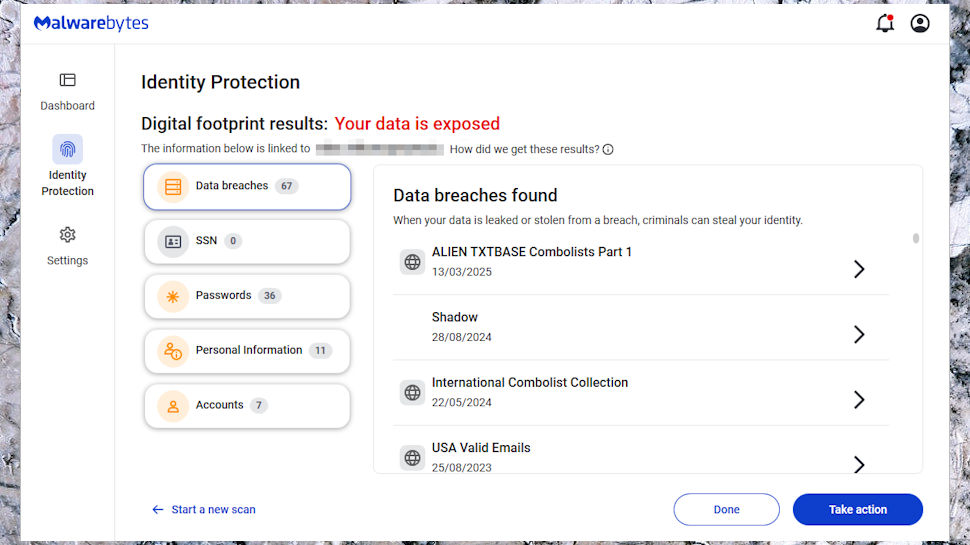
Malwarebytes Premium Security: Identity Protection
Malwarebytes Premium Security doesn’t include its full identity theft protection as standard, but there is one bonus feature. A ‘digital footprint’ tool scans previous data breaches for your email address and reports on anything it finds.
This starts by Premium Security prompting for your email address. The search box warns that entering the address automatically gives permission for Malwarebytes to send you ‘product updates and security tips’, which doesn’t seem entirely fair. If you’ve bought the product already, why should Malwarebytes expect you to accept more marketing emails before you can even use one of its features?
We entered and verified our email anyway, hit Scan, and waited a few seconds for the results.
These began with a list of the breaches where our email appeared. There were an impressive 67, including – oops – a 2016 breach when Malwarebytes’ own forum was compromised.
Every antivirus ‘dark web scanner’ can do that, but Malwarebytes goes further. Rather than force us to wade through all 67 breaches, it gives us separate tabs to instantly see our exposed accounts, passwords or personal information.
These might relate to breaches from long ago, but they’re still important. Scroll down the Passwords tab and, if you see a password you’re still using, that’s an important warning: hackers could try it with different platforms to compromise those accounts.
The Personal Information section is more worrying. We found some of the breaches contained our address and a landline phone number. We can’t do much (okay, anything) about that, but it’s still good to know.
US users get one other big plus: Malwarebytes also identifies any breaches containing your SSN (Social Security Number), which could be misused to claim benefits, access credit or commit fraud.
Most antivirus apps have some kind of dark web scanner, but these usually have even less features than free websites like haveibeenpwned.com. Malwarebytes’ identity scanner leaves these trailing in its digital dust, by finding significantly more details and making them much, much easier to access. It’s a very welcome feature which adds real value to Malwarebytes Premium Security.
Malwarebytes Premium Security: Final verdict
Malwarebytes Premium Security is an unusual antivirus range. It’s missing a lot of features compared to the high-end competition : there’s no password manager, parental controls, webcam hijacking protection, secure file deletion and more. But that also makes it more lightweight, simpler and cheaper, and Premium Security Plus and Ultimate do have a very valuable extra in their unlimited VPN.
Malwarebytes’ core malware protection is strong, too, especially if you can add an extra layer in its BrowserGuard extension. If you’re a Malwarebytes fan and you only need the security basics, it might be worth a try, but everyone else will get better protection elsewhere. Bitdefender and Norton 360 have more features, and Avast One has a great antivirus engine and a limited 5GB-a-week VPN for free.
We feature the best cloud antivirus.







Leave a Comment
Your email address will not be published. Required fields are marked *